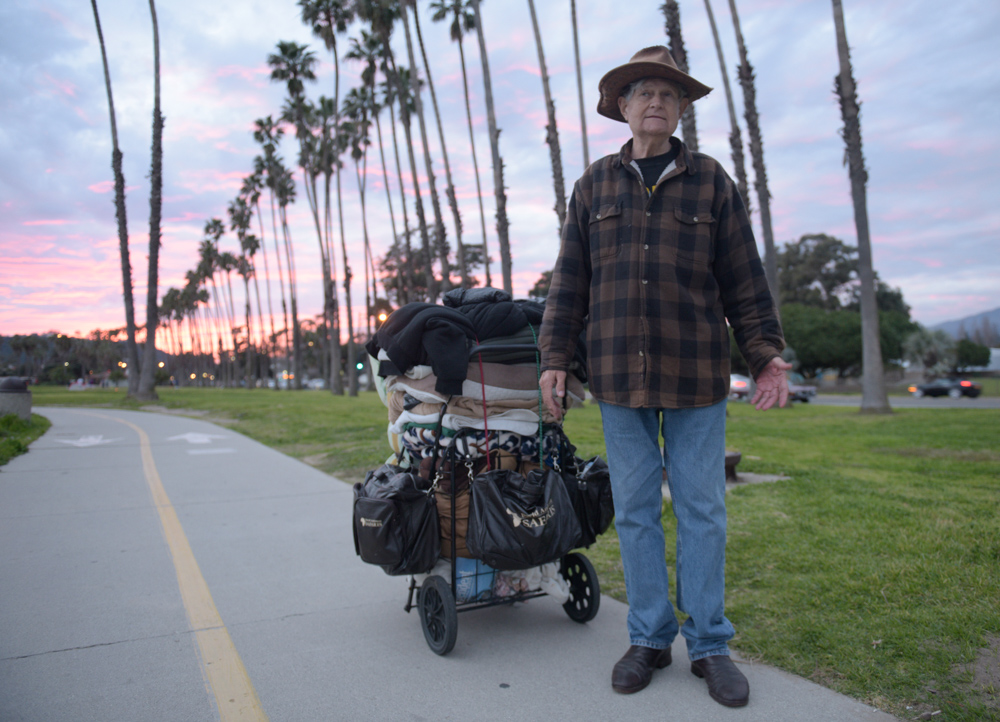Pop-Up Shelters Get More Funding
Cold Weather Strains Homeless Services

With the Central Coast inundated with freezing rains and sustained plunging temperatures this winter, Santa Barbara’s emergency “pop-up” warming shelters have been overwhelmed by increased demand, prompting the Santa Barbara City Council to augment funding for such operations by $15,000. This brings the city’s contribution to nearly $60,000.
Freedom Warming Centers — named for a homeless ex-Marine who died of hypothermia in his wheelchair outside the Cacique Street homeless shelter 10 years ago — has already run through its funding for this year, and the emergency-shelter season runs through the end of March. To date, Freedom Warming Centers, which operates on an annual budget of $190,000, reported providing 3,411 bed nights of respite from the elements. As of January 30, the shelters — 10 makeshift operations countywide, mostly in churches — had provided 2,567 bed nights of shelter. Last year by that same time, the number was 1,210.
Freedom Warming Centers provides temporary beds when the temperatures drop below 36 degrees or there’s more than a 50 percent chance of rain two nights in a row. Santa Barbara’s main shelter — run by the nonprofit People Assisting the Homeless (PATH) — has a maximum winter capacity of 200 beds but typically screens guests for sobriety. The Freedom shelters admit “low-barrier” individuals, a bureaucratic euphemism for those too intoxicated to be admitted by other shelters except during emergency circumstances.
The demand for services has triggered an intense debate over the trigger points at which the pop-up shelters open their doors. Thirty-five degrees, the council was told, is too low. “I challenge all of you to sleep outside at 39 degrees,” said Nancy McCradie, longtime homeless advocate. Councilmember Kristen Sneddon, a self-described ardent camper, acknowledged that at 35 degrees, “It’s unbearable to get through the night.”
Mayor Cathy Murillo noted that PATH opens its emergency winter beds when the mercury hits 40 or below. She also suggested the time to debate the proper trigger points would be after this winter’s season ends. (The 35-degree limit was originally set — as opposed to the 40-degree limit advocated by homeless supporters — in order to win the political support needed to secure funding for such shelters.) If the shelters activated at 40 degrees, that would cost more money and require more than the 100 volunteers who now are on hand to staff the shelters.
Although the final vote to increase funding was unanimous, it was not made before councilmember Jason Dominguez noted that city police had reported a 100 percent increase in the calls for service relating to vagrancy. He wondered whether that meant there were more homeless people or the same number of homeless people committing more crime. Dominguez expressed concern and horror at the encampments springing up under freeway bridges on the Eastside. “What about big armchairs in the middle of the sidewalk?” he asked CityAttorney Ariel Calonne after Calonne described the difficulty encountered by city employees in discerning refuse from personal property of people living on the street.
Mayor Murillo suggested such statistical explorations — more crime or more homeless people — could be better undertaken after the results of the most recent homeless census are released.



